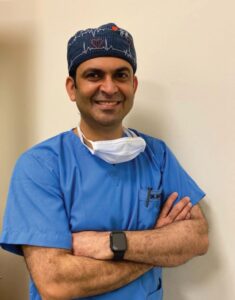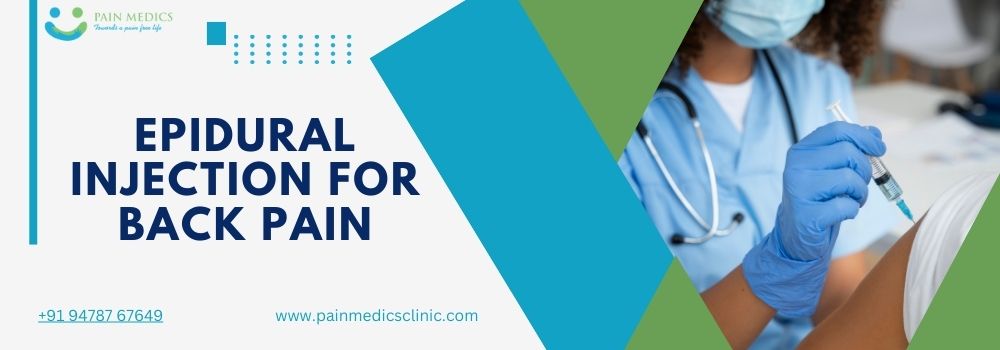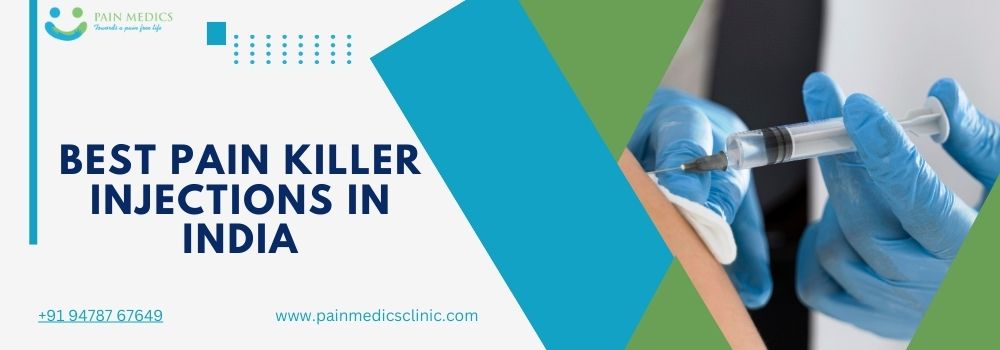C5-C6 Disc Bulge– In today’s fast-paced environment, the rising prevalence of spine and neck-related disorders is an increasing concern. Among these, the main concern that significantly impacts an individual’s life quality is the C5-C6 Disc Bulge. In this blog, we will discuss the symptoms, causes, and diagnosis of C5-C6 disc bulge, while targeting non-surgical treatments such as cervical epidural injections and physical therapy.
Anatomy of C5-C6 Disc Bulge
The cervical spine has seven vertebrae (C1-C7). It supports the weight of the head and also facilitates its movements. There is an intervertebral disc located between adjacent vertebrae. It absorbs shocks and acts as a cushion, thus allowing flexibility. The C5-C6 Disc is located between the 5th and 6th cervical vertebrae. It plays a crucial role in neck movement. At this level, a disc bulge refers to the displacement or abnormal protrusion of the disc material beyond its area. It can be studied with X-rays, MRI, and discography.
Causes of C5-C6 Disc Bulge
Various factors can lead to the development of a C5-C6 Disc Bulge. Some of them are mentioned below:
- Age-Related Degeneration: The natural ageing process is one of the primary causes. The disc in the cervical spine lose their water content and elasticity with time. It makes them more susceptible to herniation or bulging.
- Injury or Trauma: Sports-related injuries or accidental falls can create a force on the neck, which can lead to a Disc Bulge.
- Repetitive Strain and Occupational factors: Poor body posture, prolonged sitting and bad ergonomics, especially in those involved in prolonged screen exposure, are important causes of disc bulges and prolapse in modern times.
- Genetic Characteristic: It can be a genetic predisposition in many individuals who develop disc problems.
- Obesity: Heavy body weight can cause extra stress on the cervical spine and may increase disc issues.
These causes are important to understand in preventive measures and effective treatments.
Also Read: How To Manage Neck And Shoulder Pain?
Symptoms Related to C5-C6 Disc Bulge
Understanding the symptoms of the C5-C6 Disc Bulge is vital to timely diagnose and treat it. These symptoms may include:
- Neck Pain: One of the common symptoms of C5-C6 Disc Bulge is constant or persistent pain in the neck area.
- Radiating Pain: Pain can radiate from your neck to your shoulder, arms, and then to your fingers. It is commonly described as a tingling or burning sensation.
- Muscle Weakness: Affected nerve roots can also cause weakness in the muscles, which leads to difficulties in performing motor skills.
- Tingling and Numbness: In upper limbs, sensory disturbances such as Tingling or Numbness can be frequently reported.
- Reduced Motion Range: Reducing the ability to move the neck comfortably and stiffness can be observed frequently.
- Headaches: Headaches occur secondarily with continuous spasms and strain on neck muscles.
The above symptoms should not be ignored as they may affect the daily life of the individual. To prevent the condition from worsening, an early diagnosis and appropriate treatment are needed.
Non-Surgical Treatments
Non-surgical modalities form an essential cog for treating a C5-C6 disc bulge. Their main goal is to relieve pain, reduce inflammation, and restore functional activity of the cervical spine. Three non-surgical options are on the table.
Related Posts: Non-Surgical Neck Pain Treatments
Cervical epidural injections
Cervical epidural injections are an accepted non-surgical means of addressing a C5-C6 disc bulge. Here, corticosteroids are injected directly into the epidural space near the affected nerve roots. These injections have diagnostic and therapeutic utility.
The corticosteroids, injected directly close to the affected disc and nerve, under fluoroscopy guidance, decrease inflammation and pain, thereby reducing the discomfort. A study published in 2019 in the Journal of Orthopaedic Surgery and Research found that cervical epidural injections had a statistically significant pain-relieving effect in patients with cervical disc herniation
Intradiscal Treatments
Intradiscal treatments consist of intradiscal ozone injection, endoscopic discectomy and PRP into the disc to treat and reduce the size of the bulged disc, so as to reduce the pressure on the nerve from within. Moreover, intradiscal procedures are curative for disc-related pathologies rather than only providing pain relief.
Physical therapy
Physical therapy is an indispensable part of the non-surgical treatment for a C5-C6 disc bulge. It comprises an improvement in posture, strengthening of the neck and shoulder muscles, and stretching exercises designed to restore normal cervical spine movement.
At Pain Medics Clinic
Pain Medics Clinic is eminent for providing the best care for patients suffering from neck pain in Chandigarh, Mohali, and Panchkula. A reputation has been built for diagnosing and assessing neck pain conditions very accurately and treating them with customised treatment plans for lasting relief. Our team comprises experienced doctors and specialists applying the latest medical techniques so that you get the best treatment to ensure your recovery. We will always focus on finding the root problem so that you can regain more mobility and better well-being. Pain Medics Clinic ranks among the leading clinics for treating neck pain in Chandigarh, Mohali, and Panchkula.







